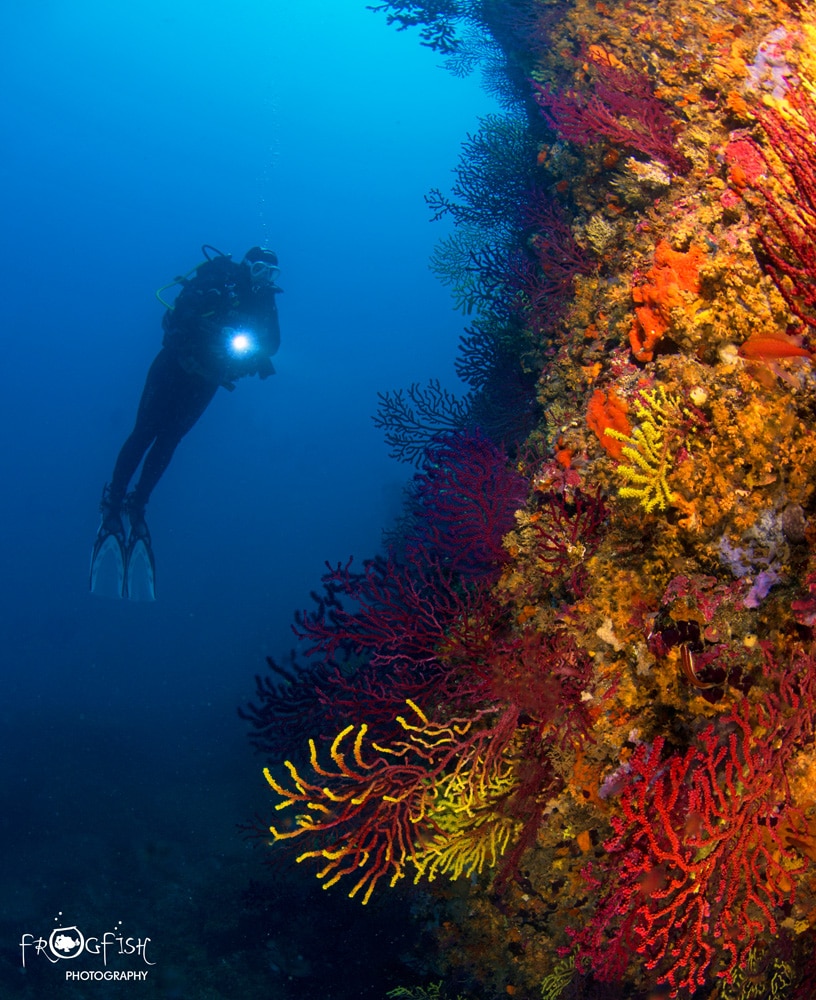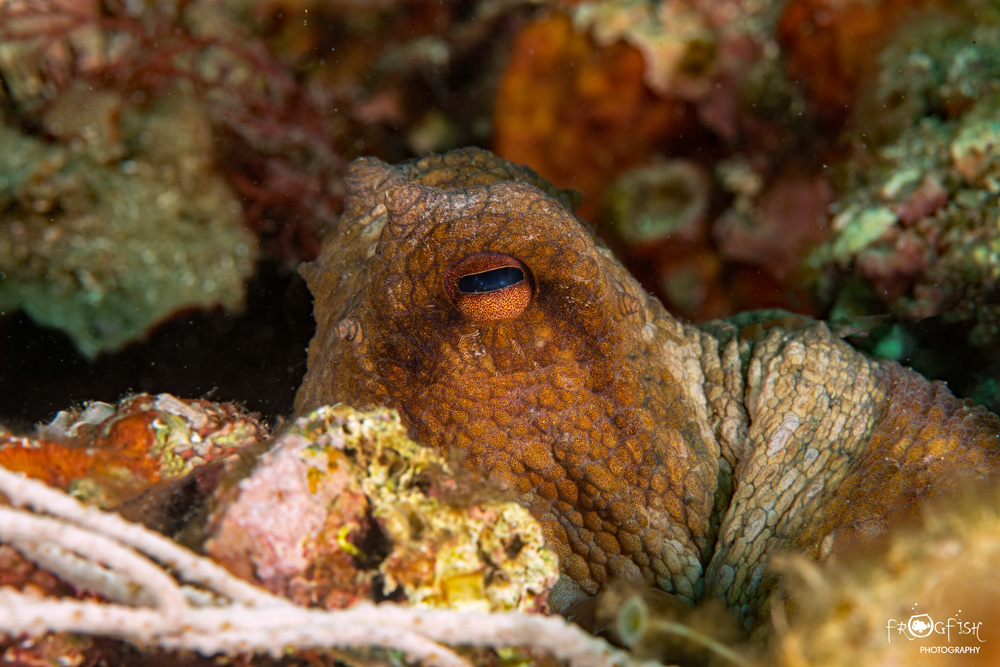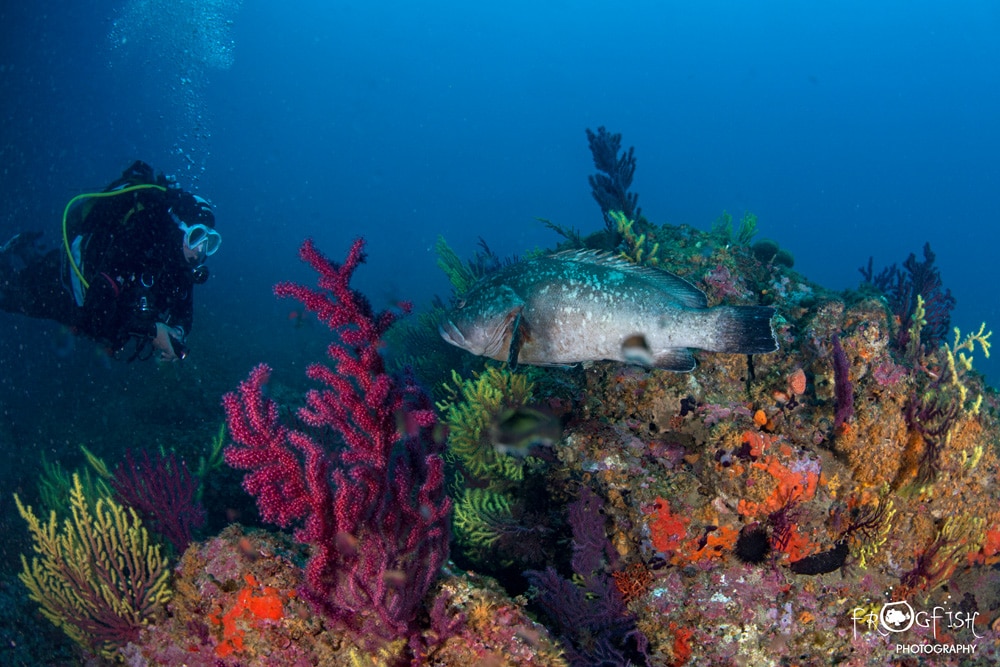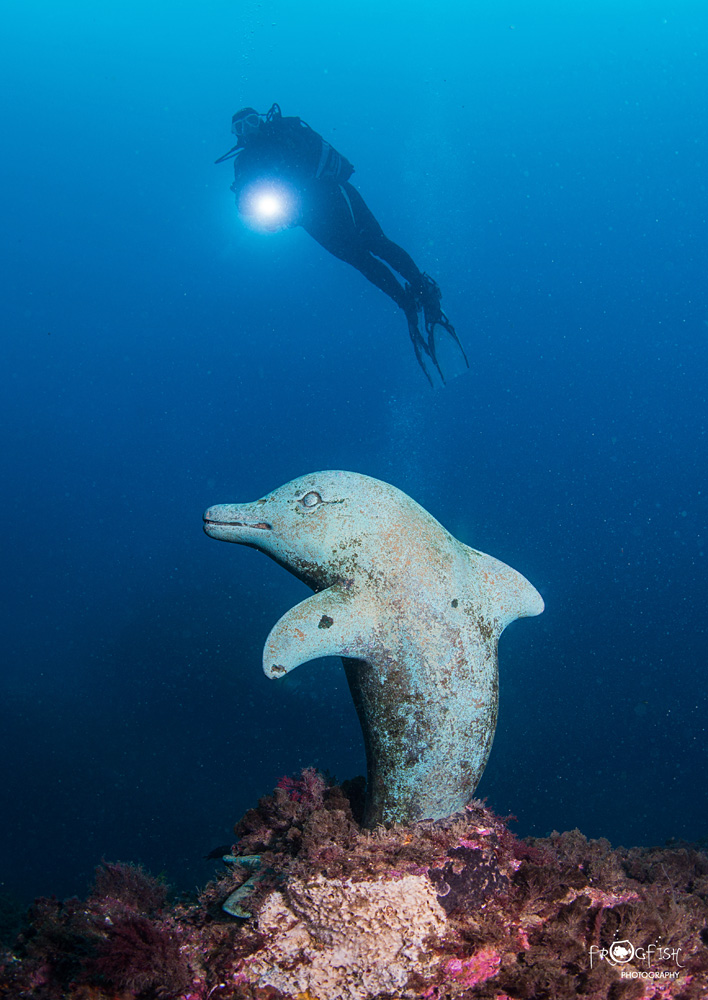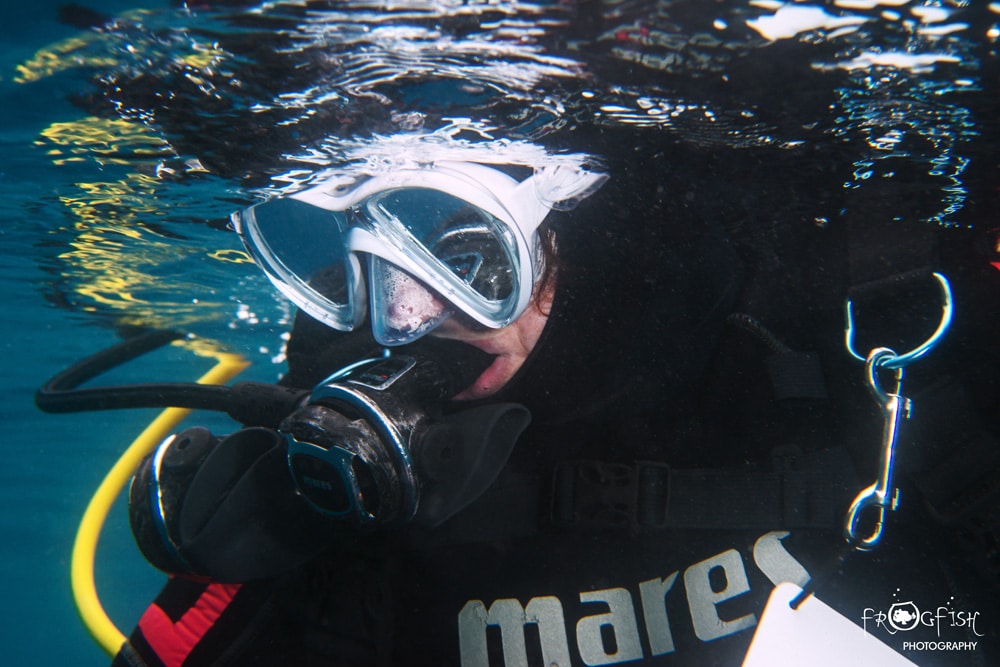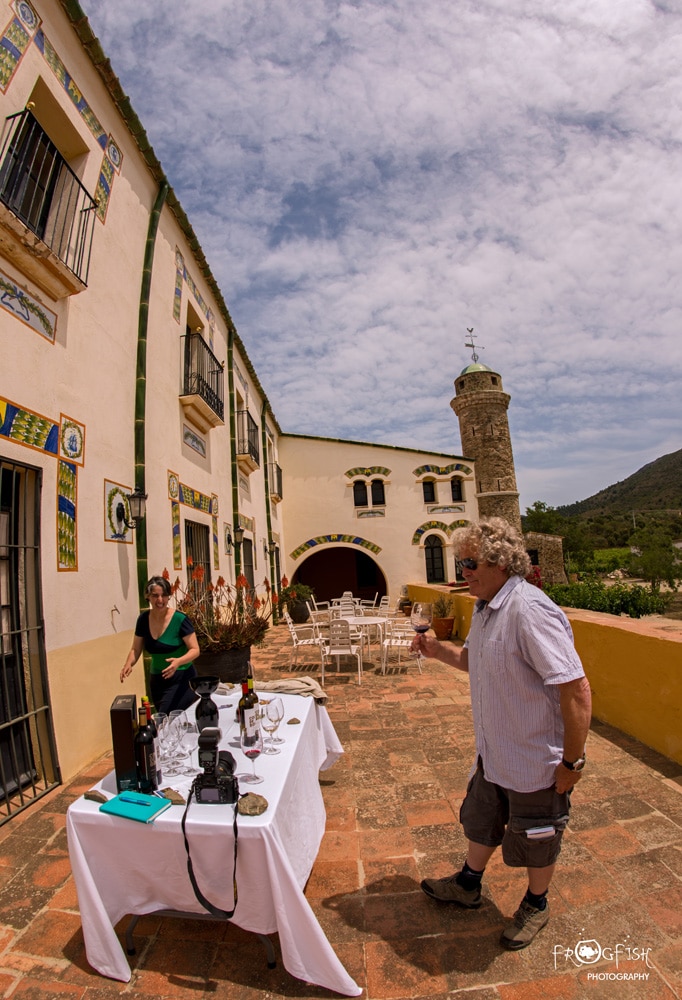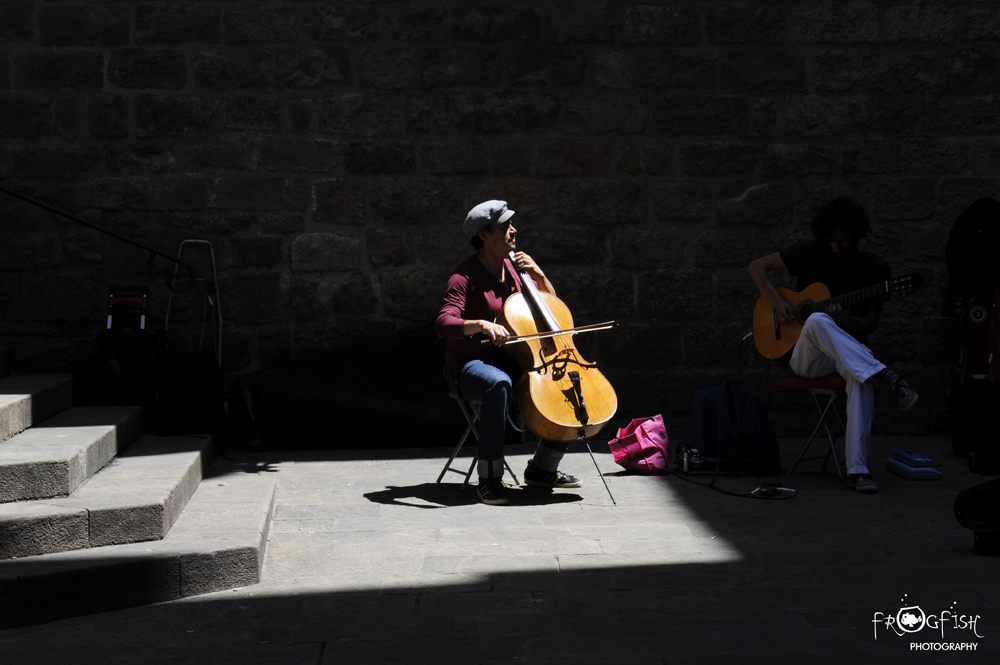News
Wining and Diving – Costa Brava, Spain
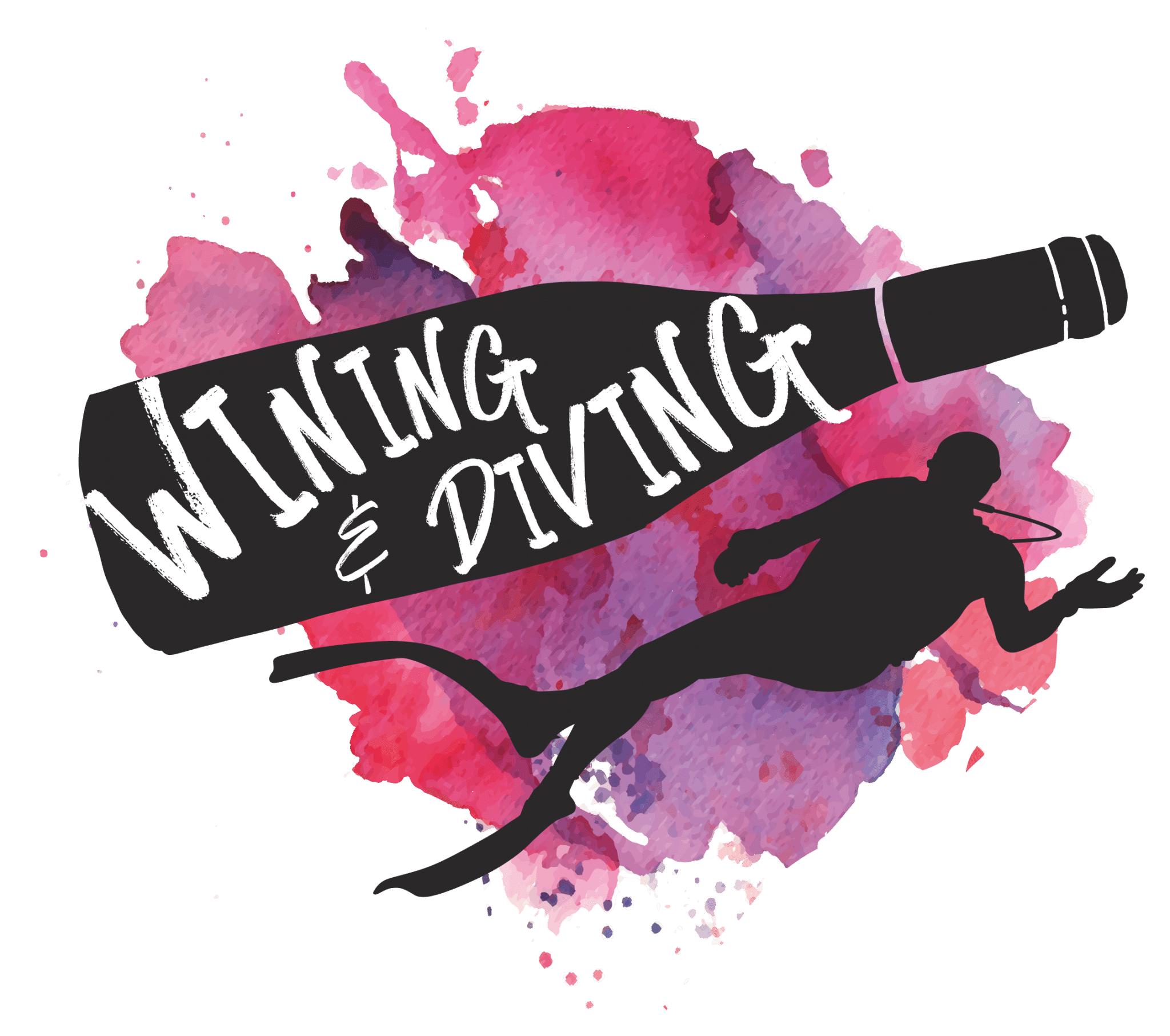
The Wining and Diving series sees Nick and Caroline Robertson-Brown embark on a tour to tickle the taste buds as well as to discover amazing dive sites in wine-making regions around the world. Some of the best wines are influenced by sea breezes and a coastal climate, allowing two of Nick and Caroline’s passions to be combined into one epic journey.
**Please note, Nick and Caroline are not encouraging drinking before diving! The two activities are kept well apart on each of these trips.
The Costa Brava is a hugely popular destination for those seeking sunshine, but it has much, much more to offer that just beaches and bars. One advantage to the huge number of tourists heading in this direction each year, is that the flights are competitively priced and go from all our major, and some smaller, airports. We had heard that there was some excellent diving around the Medes Islands and we got the opportunity to head to L’Estartit for a long weekend to check it out, as well as exploring the local region to sample its excellent food and wine. We flew into Girona, which is about an hour away from our coastal base and flew back to the UK from Barcelona, about 2 hours away from L’Estartit.
Our diving was to be based around a group of pinnacles called the Medes Islands. These can be reached by a very short boat ride from L’Estartit and are a series of weather-worn rocks rearing up out of the sea. The islands and the sea that surrounds them have been a marine reserve for over 30 years and the protected area immediately around the island excludes all fishing and hunting activities as well as throwing anchor. A much larger area, which is increasing in size all the time, has a series of further protections, to prevent any harmful fishing activities and preventing all but the handful of local line fishing boats from coming into this area at all. This protection, over a long period of time, has made these islands a mecca for divers.
The rock formations, when you go down to around 20m are covered in amazing gorgonian corals. Red, orange, yellow and pink corals cover the walls, anemones fight for space, so that dives are packed with colour. The fish life is also excellent. We encountered large octopus and grouper on all the dives. Schools of smaller fish patrol the shallows, barracuda form large schools and circle in the sunlight and blennies hide in every small hole that can be found. We also saw the biggest scorpionfish you are ever likely to see! On the short boat ride back to shore between dives, we encountered mola mola.
In our short stay, we got to visit 4 dive sites over 2 days of diving. Our first dive was actually on the main coastline rather than the Medes islands themselves. In flat calm water, basking in sunshine, we dropped down to find a series of overhangs, tunnels and caves to explore. Barracuda glinted in the sunlight near the surface and we were treated with an octopus poking out of a crevice on our slow descent. Closer inspection of the reef revealed both huge and tiny nudibanches, camouflaged scorpionfish and blennies hiding in every hole in the coral. It was a great dive, topped off by seeing a Mola mola, or sunfish, at the surface from the boat on our short journey back to harbour. After a bite to eat, we were back on a boat and heading for our first dive of the Medes Islands.
Les Farranelles is one of the smallest islands in the Medes Islands. The dive ranges in depth from around 8 to 40m. As you go deeper, you find more and more rock formation covered in amazing corals. Large grouper hang motionless in the water and even come up to divers to see what they are up to. As you come up shallower, you can spend time looking for tiny critters on boulders closer to the surface. Moray Eels hide between the rocks, with their cleaner shrimp companions.
The next day we dived El Salpatxot, where a vital marine ecosystem of sea grass shelters juvenile fish. This dive site is on the largest of the islands and so can provide some shelter for divers in windy conditions. However, for us it was another perfect day, with visibility of about 15m, flat seas and the water temperature which suited our 5mm wetsuits well (around 21 degrees). Our final dive was to be one of the most famous dive sites in the area: Dolfi Sud (or Dolphin South). The site is named after a small statue of a dolphin that can be found at the entrance of one of the many caves that make up this dive site, one of which cuts right through the island from one side to the other. Grouper patrol the caverns that, at certain times of day, are flooded with sunlight. Conger eels lie tucked away in the caves too. It is a great site for those that like to explore.
Our diving over for this trip, we picked up our hire car and planned a route with the tourist board that would allow us visit some of the best, though not well-known, vineyards in the area and to be able to sample the fabulous local produce. This part of Spain is famous for olive oil and wine, as well as great food. We took our car up into the Roses region to sample some of what was on offer. Much of the area on land, as well as at sea, is nature reserve too, so the growers of olives and grapes follow a more traditional way of production, using organic methods and shunning heavy machinery. Our first stop was to a local co-operative, Empordalia, who work with local farmers to bring to market, the wines, olive oil and other local produce to sell in their shop and café. The wine, especially the sweet, red wine, and olive oil were wonderful and so we decided to bring some home with us (regardless of our tight weight limit on the plane!)
We then headed further towards the coast to visit a vineyard that was run by the granddaughter of the founder, Col de Roses. She whisked us into her 4×4 and said I have something to show you. She drove us through the stunning coutryside down to the coast, along smaller and smaller roads, until we were driving through the terraced national park along her vines. All this so that she could show us her sea view vines that get their cooling straight from the sea breezes. “You are divers” she said, “so am I – I thought you would like this!” We did. Up on the terrace, with got a chance to sample the wines and then, to our delight, she gave us 3 bottles to bring home and try in our own time (packing really was going to be a problem!)
Our final stop was to a gourmet restaurant, called Terranova, for lunch. This was to be no ordinary lunch, but a tasting menu, where food seemed to be never-ending, each small course being accompanied by a local wine (for Nick – who was not driving). We sat on the terrace, in dappled sunshine and loved every minute of it. Our tour was a perfect day trip from L’Estartit. The tourist board have created wine tours for all those that fancy a go at this and provide maps and recommendations to help you along.
As a final bonus, with our return flight from Barcelona, we got to do a quick day trip, taking in a leisurely walk up Las Ramblas, stumbling across a festival with human towers reaching scary heights with tiny children in crash helmets at the very top, jumping on a bus tour around this stunning city, all before heading to the airport and home.
Links
- For more information about Frogfish Photography click here.
- For information about visiting L’Estartit click here.
- For details on the dive centre we dived with click here.
- For more information about the wine we sampled: Empordalia and Col de Roses
Blogs
Northern Red Sea Reefs and Wrecks Trip Report, Part 3: The Mighty Thistlegorm

Jake Davies boards Ghazala Explorer for an unforgettable Red Sea diving experience…
Overnight, the wind picked up, making the planned morning dive a bit bumpy on the Zodiacs to the drop point on Thomas Reef. There, we would dive along the reef before descending through the canyon and then passing under the arch before ascending the wall with a gentle drift. The site provided great encounters with more pelagic species, including shoals of large barracuda, tuna, and bigeye trevally.
Once back on the boat, it was time to get everything tied down again as we would head back south. This time, with the wind behind us, heading to Ras Mohammed to dive Jackfish Alley for another great gentle drift wall dive before then heading up the coast towards the Gulf of Suez to moor up at the wreck of the Thistlegorm. This being the highlight wreck dive of the trip and for many onboard, including myself, it was the first time diving this iconic wreck. I had heard so much about the wreck from friends, and globally, this is a must on any diver’s list. Fortunately for us, there was only one other boat at the site, which was a rarity. A great briefing was delivered by Ahmed, who provided a detailed background about the wreck’s history along with all the required safety information as the currents and visibility at the site can be variable.

Kitting up, there was a lot of excitement on deck before entering the water and heading down the shoreline. Descending to the wreck, there was a light northerly current which reduced the visibility, making it feel more like the conditions that can be found off the Welsh coast. At 10m from the bottom, the outline of the wreck appeared as we reached the area of the wreck which had been bombed, as our mooring line was attached to part of the propeller shaft. Arriving on deck, instantly everywhere you looked there were many of the supplies which the ship was carrying, including Bren Carrier tanks and projectiles that instantly stood out.

We headed around the exterior, taking a look at the large propeller and guns mounted on deck before entering the wreck on the port side to take a look in the holds. It was incredible to see all the trucks, Norton 16H, and BSA motorcycles still perfectly stacked within, providing a real snapshot in time.

Overall, we had four dives on the Thistlegorm, where for all of the dives we were the only group in the water, and at times, there were just three of us on the whole wreck, which made it even more special, especially knowing that most days the wreck has hundreds of divers. Along with the history of the wreck, there was plenty of marine life on the wreck and around, from big green turtles to batfish, along with shoals of mackerel being hunted by trevally. Some unforgettable dives.

The final leg of the trip saw us cross back over the Suez Canal to the Gobal Islands where we planned to stay the night and do three dives at the Dolphin House for the potential of sharing the dive with dolphins. The site, which included a channel that was teeming with reef fish, especially large numbers of goatfish that swam in large shoals along the edge of the reef. These were nice relaxing dives to end the week. Unfortunately, the dolphins didn’t show up, which was okay as like all marine life they are difficult to predict and you can’t guarantee what’s going to be seen. With the last dive complete, we headed back to port for the final night where it was time to clean all the kit and pack before the departure flight the next day.

The whole week from start to finish on Ghazala Explorer was amazing; the boat had all the facilities you need for a comfortable week aboard. The crew were always there to help throughout the day and the chefs providing top quality food which was required after every dive. The itinerary providing some of the best diving with a nice mixture of wreck and reef dives. I would recommend the trip to anyone, whether it’s your first Red Sea liveaboard in the Red Sea or you’re revisiting. Hopefully, it’s not too long before I head back to explore more of the Red Sea onboard Ghazala Explorer.

To find out more about the Northern Red Sea reef and wrecks itineraries aboard Ghazala Explorer, or to book, contact Scuba Travel now:
Email: dive@scubatravel.com
Tel: +44 (0)1483 411590
Photos: Jake Davies / Avalon.Red
Blogs
Northern Red Sea Reefs and Wrecks Trip Report, Part 2: Wall to Wall Wrecks

Jake Davies boards Ghazala Explorer for an unforgettable Red Sea diving experience…
The second day’s diving was a day full of wreck diving at Abu Nuhas, which included the Chrisoula K, Carnatic, and Ghiannis D. The first dive of the day was onto the Chrisoula K, also known as the wreck of tiles. The 98m vessel remains largely intact where she was loaded with tiles which can be seen throughout the hold. The stern sits at 26m and the bow just below the surface. One of the highlights of the wreck is heading inside and seeing the workroom where the machinery used for cutting the tiles are perfectly intact. The bow provided some relaxing scenery as the bright sunlight highlighted the colours of the soft coral reef and the many reef fish.

Following breakfast, we then headed to the next wreck, which was the Carnatic. The Carnatic is an 89.9m sail steamer vessel that was built in Britain back in 1862. She ran aground on the reef back in 1869 and remains at 27m. At the time, she was carrying a range of items, including 40,000 sterling in gold. An impressive wreck where much of the superstructure remains, and the two large masts lay on the seafloor. The wooden ribs of the hull provide structures for lots of soft corals, and into the stern section, the light beams through, bouncing off the large shoals of glass fish that can be found using the structure as shelter from the larger predators that are found outside of the wreck.

The final wreck at Abu Nuhas was the Ghiannis D, originally called ‘Shoyo Maru,’ which was 99.5m long and built in Japan back in 1969 before becoming a Greek-registered cargo ship in 1980. The ship then ran aground on the reef on April 19th, 1983, and now sits at the bottom at a depth of 27m. Heading down the line, the stern of the ship remains in good condition compared to the rest of the hull. The highlight of the wreck, though, is heading into the stern section and down the flights of stairs to enter the engine room, which remains in good condition and is definitely worth exploring. After exploring the interior section of the ship, we then headed over to see the rest of the superstructure, where it’s particularly interesting to see the large table corals that have grown at the bow relatively quickly considering the date the ship sank. After surfacing and enjoying some afternoon snacks, we made sure everything was strapped down and secured as we would be heading north and crossing the Gulf of Suez, where the winds were still creating plenty of chop.

The next morning, it was a short hop to Ras Mohammed Nature Reserve for the next couple of days of diving. The 6am wake-up call came along with the briefing for the first site we would be diving, which was Shark & Yolanda. The low current conditions allowed us to start the dive at Anemone City, where we would drift along the steep, coral-filled wall. These dives involved drifts, as mooring in Ras Mohammed wasn’t allowed to protect the reefs. As a dive site, Shark & Yolanda is well-known and historically had a lot of sharks, but unfortunately not so many in recent years, especially not so early in the season. However, there was always a chance when looking out into the blue.

The gentle drift took us along the steep walls of the site, with plenty of anemone fish to be seen and a huge variety of corals. It wasn’t long into the dive before we were accompanied by a hawksbill turtle, who drifted with us between the two atolls before parting ways. Between the two reefs, the shallow patch with parts of coral heads surrounded by sand provided the chance to see a few blue-spotted stingrays that were mainly resting underneath the corals and are always a pleasure to see. With this being the morning dive, the early sunlight lit up the walls, providing tranquil moments. Looking out into the blue, there was very little to be seen, but a small shoal of batfish shimmering underneath the sunlight was a moment to capture as we watched them swim by as they watched us.

Towards the end of the dive, we stopped at the wreck of the Jolanda where the seafloor was scattered with toilets from the containers it was carrying. This provided a unique site to make a safety stop, which was also accompanied by a large barracuda slowly swimming by, along with a hawksbill turtle calmly swimming over the reef as the sun rays danced in the distance.
For the next dive, we headed north to the Strait of Tiran to explore the reefs situated between Tiran Island and Sharm El Sheik, which were named after the British divers who had found them. We started on Jackson before heading to Gordons Reef, where we also did the night dive. All the atolls at these sites provided stunning, bustling coral reefs close to the surface and steep walls to swim along, which always provided the opportunity to keep an eye out for some of the larger species that can be seen in the blue. Midwater around Jackson Reef was filled with red-toothed triggerfish and shoals of banner fish, which at times were so dense that you couldn’t see into the blue. Moments went by peacefully as we enjoyed the slow drift above the reef, watching these shoals swim around under the mid-afternoon sun.

The night dive at Gordon’s Reef was mainly among the stacks of corals surrounded by sand, which was great to explore under the darkness. After some time circling the corals, we came across what we were really hoping to find, and that was an octopus hunting on the reef. We spent the majority of the dive just watching it crawl among the reef, blending into its changing surroundings through changes in colour and skin texture. It’s always so fascinating and captivating to watch these incredibly intelligent animals, in awe of their ability to carry out these physical changes to perfectly blend into the reef. Before we knew it, it was time to head back to the boat to enjoy a well-deserved tasty dinner prepared by the talented chefs onboard.
Check in for the 3rd and final part of this series from Jake tomorrow!
To find out more about the Northern Red Sea reef and wrecks itineraries aboard Ghazala Explorer, or to book, contact Scuba Travel now:
Email: dive@scubatravel.com
Tel: +44 (0)1483 411590
Photos: Jake Davies / Avalon.Red
-

 News3 months ago
News3 months agoHone your underwater photography skills with Alphamarine Photography at Red Sea Diving Safari in March
-

 News3 months ago
News3 months agoCapturing Critters in Lembeh Underwater Photography Workshop 2024: Event Roundup
-

 Marine Life & Conservation Blogs2 months ago
Marine Life & Conservation Blogs2 months agoCreature Feature: Swell Sharks
-

 Blogs2 months ago
Blogs2 months agoMurex Resorts: Passport to Paradise!
-

 Blogs2 months ago
Blogs2 months agoDiver Discovering Whale Skeletons Beneath Ice Judged World’s Best Underwater Photograph
-

 Gear Reviews3 months ago
Gear Reviews3 months agoGear Review: Oceanic+ Dive Housing for iPhone
-

 Marine Life & Conservation2 months ago
Marine Life & Conservation2 months agoSave the Manatee Club launches brand new webcams at Silver Springs State Park, Florida
-

 News3 months ago
News3 months agoWorld’s Best Underwater Photographers Unveil Breathtaking Images at World Shootout 2023


